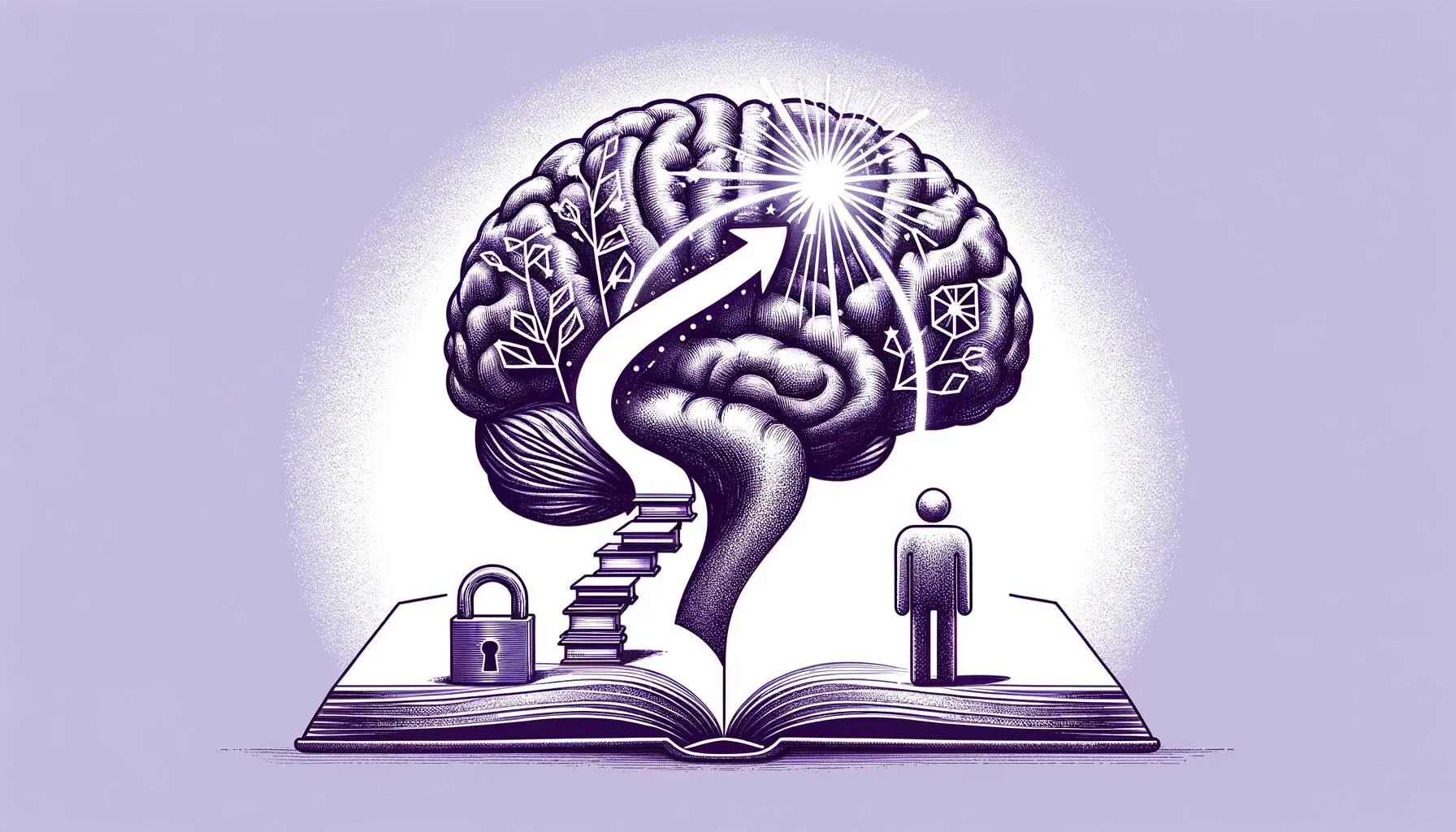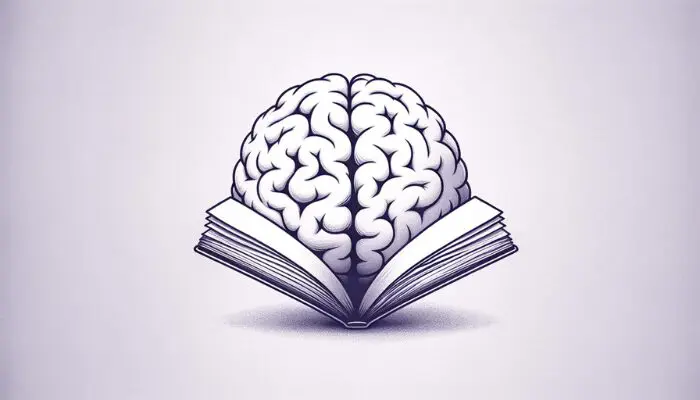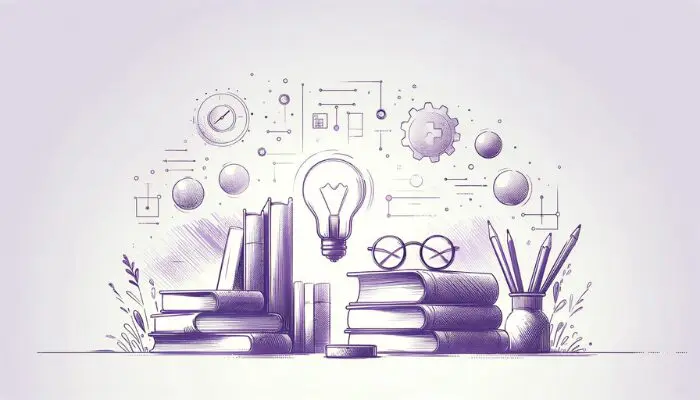10 Ways to Remember What You Study
Tips and Tricks for Effective Learning

In the quest for knowledge, our memory is both our most powerful ally and our greatest challenge. It’s a complex system, capable of remarkable feats, yet often elusive and frustratingly fickle. Many of us have felt the sting of forgetting something we’ve just learned, leading to moments of doubt and disappointment. Yet, understanding the intricate dance of encoding, storing, and retrieving information is the first step towards mastering it.
With insight, patience, and the right techniques, the path to effective studying and lasting recall is within reach.
In this article, we explore ways to remember what you study, turning the page on frustration and opening the door to confidence and success in your learning endeavors.
This article will give you:
✅ a deep understanding of memory and remembering
✅ general tips and tricks to remember what you study
✅ profound approaches and strategies to experiment with
How Does Your Memory Work?
Memory is a complex and vital process that enables us to encode, store, and retrieve information. This process consists of three key steps:
- Encoding: This is the initial stage where new information is received and processed through various methods such as visual (how it looks), acoustic (how it sounds), semantic (what it means), and tactile (how it feels) encoding. The way information is encoded plays a crucial role in how it is later recalled.
- Storage: Information is first stored in short-term memory (STM), which lasts about 15 to 30 seconds and can hold between five and nine items. For information to move from STM to long-term memory (LTM), which has an almost unlimited capacity and can retain information indefinitely, it needs to be actively repeated and reviewed. Long-term memory stores information based on meaning and is essential for the knowledge we need to access over a longer period.
- Retrieval: Retrieving information from memory depends on whether it’s in STM or LTM. STM retrieval is sequential, while LTM relies on associations, enabling us to recall past experiences, facts, and processes.
Memories can be declarative (explicit) or nondeclarative (implicit), referring to information we consciously remember versus what we recall subconsciously, like skills or habits. The creation and storage of memories involve multiple areas of the brain and are influenced by our senses and the emotions tied to the experiences. Understanding how memory works is crucial for developing effective study habits and improving our ability to retain and recall information.
10 Ways to Remember What You Study
It’s important to note that there is no particular foolproof memory trick to remember what you study. As the brain has a number of memory triggers, activated by various stimuli, everyone responds differently. This is of particular importance for students looking for how to study and remember fast.
That’s why we’ve put together a guide with examples and techniques that suite different types of people and personalities. It may take some time to learn how to trick your brain to remember almost anything, but hopefully, you’ll find something that helps you make the most of your brain’s abilities.
1. Try to Understand the Information
Grasping the core of what you’re learning is the foundation of effective study. It involves more than just memorizing facts or figures; understanding means seeing the how and why behind the data. Here’s how to ensure you truly understand the information you’re studying:
Break Down Complex Concepts
- Simplify: Start by breaking down complex topics into simpler components. Look for analogies or real-life examples that relate to the concept.
- Visualize: Create diagrams, charts, or drawings that help illustrate the relationships between different parts of the information.
Connect New Knowledge with What You Already Know
- Relate: Try to find connections between new information and something you already know and map them out with tools such as a Knowledge Graph. This creates mental hooks that make the new information easier to recall.
- Contextualize: Understand the broader context of the information. How does it fit into the bigger picture? This helps in forming a more cohesive understanding.
Ask Questions
- Be Curious: Always ask “Why?” and “How?”. These questions drive deeper understanding.
- Clarify Doubts: Never hesitate to ask for clarification on points you find confusing. Use resources like forums, study groups, or teachers to get your questions answered.
Engage in Active Learning
- The Protégé Effect: Explaining the material to someone else is a powerful method to deepen your understanding. It forces you to organize your knowledge and fill in any gaps.
- Apply Practically: Whenever possible, apply what you’re learning in practical scenarios. This could be through exercises, simulations, or real-world applications.
Use Multiple Sources
- Diversify Your Study Materials: Don’t rely on a single textbook or source. Look at videos, podcasts, articles, and books to get different perspectives on the same topic.
- Cross-Reference Information: Compare how different sources present the same information. This can help highlight the most important aspects and clarify any misunderstandings.

2. Use Your Mind’s Eye
Activating your mind’s eye means harnessing the power of visualization to enhance memory and learning. This technique involves creating mental images or scenarios to represent information, making it easier to recall. Here’s how to effectively utilize your mind’s eye for studying:
Understand the Power of Visualization
- Boost Memory: Visualization links abstract information to visual memories, making it easier to recall.
- Enhance Comprehension: Visualizing concepts can aid in understanding complex information by creating a mental picture.
How to Practice Visualization
- Create Vivid Images: The more detailed and vivid your mental images, the more memorable they will be. Imagine colors, textures, and even emotions associated with the information.
- Incorporate All Senses: Engage not just sight but all senses. Imagine the sounds, smells, and even the taste or touch of objects in your visualization to deepen the learning experience.
- Use Storytelling: Construct a narrative around the information. Stories are easier to remember than isolated facts.
Visualization Techniques for Different Subjects
- For History and Literature: Imagine the events or stories unfolding in your mind, like a movie. Picture the settings, characters, and actions.
- For Science and Math: Visualize processes, equations, and concepts. For example, picture the steps of a chemical reaction or visualize geometric shapes and their properties.
- For Languages: Associate words with images of their meanings. Create a mental scenario using new vocabulary in context.
Practice with Regularity
- Daily Visualization: Incorporate visualization into your daily study routine. Regular practice strengthens your ability to use this technique effectively.
- Mind Mapping: Draw mind maps to visually organize information, then practice recreating these maps in your mind’s eye.

3. Learn in Bite-Sized Chunks
Embracing the concept of bite-sized learning involves breaking down information into small, manageable units or chunks. This approach aligns with the brain’s natural capacity for absorbing and retaining information, making it a highly efficient method to study. Here’s how to implement this strategy effectively:
Understanding Bite-Sized Learning
- Boosts Retention: Small pieces of information are easier to process and remember.
- Increases Engagement: Shorter learning sessions maintain focus and prevent mental fatigue.
- Flexibility: Easier to fit into a busy schedule, allowing for consistent daily learning.
How to Chunk Information:
- Identify Key Concepts: Break down the material into its fundamental concepts or ideas.
- Group Related Information: Organize these concepts into thematic groups or categories that logically fit together.
- Create Mini-Lessons: Designate each chunk as a mini-lesson that can be completed in a short period, typically 20-30 minutes.
Techniques for Effective Chunking
- Use Headings and Subheadings: Clearly delineate sections of your notes or study materials with descriptive headings to visually break up the content.
- Summarize Information: Write summaries for each chunk to encapsulate the key points, making it easier to review later.
Incorporating Bite-Sized Learning into Your Study Routine
- Set Specific Goals: For each study session, have a clear objective based on the chunks you plan to cover.
- Practice Spaced Repetition: Revisit each chunk at increasing intervals to enhance memory retention.
- Use Flashcards: Create flashcards for each chunk of information. They are perfect for quick review sessions and testing your recall.

4. Clench Your Fists
The intriguing connection between physical gestures and cognitive function has been explored in various studies, with one particularly interesting finding being the potential impact of clenching your fists on memory and learning. This simple physical action can, surprisingly, aid in enhancing recall and retention of information. Here’s how to utilize this technique effectively in your study routine:
The Science Behind Fist Clenching
- Right and Left Hemisphere Activation: Clenching your right fist is believed to activate the left hemisphere of your brain, which is involved in memory formation. Conversely, clenching your left fist activates the right hemisphere, associated with memory retrieval.
- Boosts Recall: The act of clenching one’s fist, when done in conjunction with learning or recalling information, might enhance memory formation and recall by stimulating neural activity related to these cognitive processes.
How to Implement Fist Clenching in Your Study Routine
During Learning
- Clench Your Right Fist: When trying to learn or memorize new information, clench your right fist for about 30 to 45 seconds. This action is thought to facilitate the encoding of memory by activating the left hemisphere of your brain.
During Recall
- Clench Your Left Fist: When attempting to recall information, clench your left fist. This might help in activating the right hemisphere of your brain, enhancing your ability to retrieve stored information.
Tips for Effective Use
- Practice Moderation: While fist clenching can be a helpful tool, relying solely on physical gestures for memory improvement is not advised. Use this technique as part of a broader study strategy.
- Mindful Timing: Be conscious of when you use this technique; clenching your fist at the right moment during learning and recall phases can maximize its effectiveness.
Caveats and Considerations
- Individual Variability: The effectiveness of fist clenching can vary from person to person. Experiment with this technique to see if it works for you.
- Use as a Supplement: Consider fist clenching as a supplementary strategy rather than a standalone solution for learning and memory.

5. Use Your Nose
The sense of smell is uniquely powerful, closely linked to memory and emotion in the brain. This connection can be harnessed in learning and recall, making the act of associating scents with information a potent tool for enhancing memory. Here’s how to effectively integrate the use of your nose into your study routine:
Understanding the Link Between Scent and Memory
- Olfactory Connection: The olfactory bulb, which processes scents, has direct connections to the areas of the brain involved in memory and emotion, making smells particularly memorable.
- Scent as a Cue: Just as a specific song can transport you back to a moment in time, a unique scent can trigger the recall of information associated with it.
How to Implement Scent in Your Study Routine
Choose Distinctive Scents
- Pick Unique Smells: Use distinctive scents that you do not commonly encounter in your daily life. This could be a particular essential oil, a type of incense, or a unique perfume.
- Variety: Assign different scents to different subjects or topics to create specific associations.
Study Sessions
- Consistent Scent Exposure: During a study session, expose yourself to the chosen scent. This could mean diffusing essential oil, lighting a scented candle, or having a scented object nearby.
- Scented Study Materials: Apply a small amount of scent to study materials if feasible, such as on flashcards.
Recalling Information
- Reintroduce the Scent: When trying to recall information, reintroduce the same scent used during the study session. The scent acts as a trigger, enhancing the ability to retrieve information.
Tips for Effective Use
- Avoid Overwhelming Scents: Choose scents that are pleasant and not too overpowering, as strong smells can become distracting.
- Consistency is Key: Use the same scent consistently with the same subject matter to strengthen the association.
Potential Benefits and Considerations
- Emotional Connection: Scents can also evoke emotions, potentially increasing motivation and the overall enjoyment of the study process.
- Personalization: Not every scent will work for every individual; it’s important to experiment to find what works best for you.

6. Take Smart Breaks
Effective studying isn’t just about the hours you put in; it’s also about how you use your downtime. Taking smart breaks is crucial for maintaining mental energy, improving retention, and preventing burnout. Here’s how to optimize your breaks for maximum study efficiency:
The Science of Breaks
- Mental Rejuvenation: Breaks allow your brain to rest, reducing cognitive fatigue and restoring focus.
- Consolidation of Learning: Downtime is when your brain processes and consolidates information, making breaks essential for memory formation.
Planning Your Breaks
Use the Pomodoro Technique
- Work-Break Balance: Study for 25 minutes, then take a 5-minute break. After four cycles, take a longer break of 15-30 minutes. This method keeps your mind fresh and maintains focus.
- Customization: Adjust the length of both work sessions and breaks to fit your personal concentration span.
Scheduled vs. Intuitive Breaks
- Scheduled Breaks: Plan breaks at regular intervals to ensure consistency and prevent the temptation to skip breaks.
- Intuitive Breaks: Pay attention to your body’s signals. Take a break when you notice a significant drop in focus or energy, but try to make it before you reach the point of fatigue.
Activities During Breaks
Physical Movement
- Stretching: Engage in light stretching to relieve muscle tension and boost circulation.
- Brief Walks: A short walk, even just around the room, can increase blood flow to the brain, enhancing alertness and well-being.
Mental Relaxation
- Mindfulness and Breathing Exercises: Practice mindfulness or deep breathing exercises to reduce stress and refocus your mind.
- Enjoyable Distractions: Engage in a completely different activity that brings you joy or relaxation, such as listening to music, but avoid getting absorbed in activities that are hard to disengage from (gaming, for example).
Smart Break Tips
- Avoid Screen Time: Staring at screens during breaks can contribute to eye strain and doesn’t allow your brain to fully rest. Opt for activities that give your eyes a break from digital devices.
- Hydration and Snacks: Use breaks to hydrate and eat brain-boosting snacks like fruits, nuts, or yogurt to replenish energy.
- Reflect Briefly: Spend a moment to reflect on what you’ve learned so far, consolidating your understanding and preparing your mind for the next study session.
The Importance of Break Length
- Short vs. Long Breaks: The optimal length of a break can vary depending on individual needs and the task at hand. Experiment with different durations to find what works best for you.

7. Build a Memory Palace
The Memory Palace, also known as the Method of Loci, is an ancient and powerful mnemonic device that leverages visualization and spatial memory to dramatically improve the recall of information. This technique involves associating the details you need to remember with specific locations within a familiar place, like your home. Here’s how to construct and use your own Memory Palace to enhance your study effectiveness:
Understanding the Memory Palace Technique
- Spatial Memory Utilization: Humans have a strong ability to recall spatial information—where things are located. The Memory Palace taps into this innate capacity by linking facts to locations.
- Visualization and Association: By vividly imagining and associating pieces of information with specific spots in a well-known place, you can significantly enhance your recall ability.
Steps to Build Your Memory Palace
1. Choose Your Palace
- Select a Familiar Place: Pick a place you know well, such as your home, school, or a regular route you take. The more familiar, the better.
- Visualize the Path: Mentally walk through this place and note specific spots along the way. These will be your “loci” (Latin for “places”) where you’ll store information.
2. Associate Information
- Create Vivid Images: Transform the information you need to memorize into vivid, even outrageous, images. The more unusual and sensory-rich, the better they stick in your memory.
- Place Your Images: Assign each piece of information an image and place it in a specific location along your path. Ensure the sequence follows a logical order.
3. Practice the Journey
- Walk Through Mentally: Close your eyes and take a mental stroll through your Memory Palace, observing each item and its associated information as you go.
- Repeat: The more you practice this mental journey, the stronger and more durable your memory of the information will become.
Tips for Effective Use
- Keep It Sequential: Arrange your loci in a sequence that you can easily follow every time. This linear approach ensures you don’t miss any information during recall.
- Use Multiple Palaces: For different sets of information, use different Memory Palaces. This prevents confusion and keeps your data organized.
- Adapt and Expand: As you become more comfortable with the technique, expand your palaces or add more details to increase the amount of information you can store.
Benefits and Considerations
- Versatility: The Memory Palace technique can be used for a wide range of information, from speeches and presentations to exam material.
- Personalization: Tailor your Memory Palace to suit your preferences and study needs. The more personalized it is, the more effective it will be.

8. Have a Good Night’s Sleep
Adequate sleep is not just crucial for physical health but plays a pivotal role in cognitive functions such as memory consolidation, learning, and problem-solving. Ensuring a good night’s sleep can significantly enhance the effectiveness of your study sessions and overall academic performance. Here’s how to optimize your sleep for better learning outcomes:
The Importance of Sleep for Learning
- Memory Consolidation: Sleep is critical for transforming new information into long-term memory.
- Cognitive Performance: Adequate sleep improves attention, problem-solving skills, and creativity.
- Emotional Well-being: Proper rest helps regulate emotions, reducing stress and anxiety levels which can impact study efficiency.
Strategies for Improving Sleep Quality
Establish a Sleep Schedule
- Consistency is Key: Go to bed and wake up at the same time every day, even on weekends. Consistency reinforces your body’s sleep-wake cycle.
- Pre-sleep Routine: Develop a relaxing routine before bed to signal your body it’s time to wind down, such as reading, meditating, or taking a warm bath.
Create an Ideal Sleep Environment
- Comfort: Ensure your mattress and pillows are comfortable and supportive. The quality of your sleep accessories can significantly impact sleep quality.
- Temperature: Keep your bedroom at a comfortable, cool temperature. Around 65°F (18.3°C) is ideal for most people.
- Minimize Noise and Light: Use earplugs, white noise machines, blackout curtains, or eye masks to reduce disturbances.
Mind Your Diet and Exercise
- Avoid Stimulants: Limit caffeine and nicotine, especially in the hours leading up to bedtime, as they can disrupt sleep.
- Exercise Regularly: Regular physical activity can help you fall asleep faster and enjoy deeper sleep, but avoid exercising too close to bedtime.
Limit Naps and Screen Time
- Short Naps: If you must nap, keep it brief (20-30 minutes) and avoid napping late in the day.
- Screen Ban: The blue light from screens can interfere with your ability to fall asleep. Avoid electronic devices at least an hour before bed.
The Role of Sleep in Study Routines
- Pre-study Rest: A good night’s sleep before studying can enhance focus and comprehension.
- Post-study Sleep: Sleeping after studying can aid in memory consolidation, making it easier to recall information later.

9. Use Mnemonics
Mnemonics are memory aids that help in the retention and recall of information. They transform complex information into a format that is easier to remember, making them a powerful tool in enhancing learning efficiency. Here’s a detailed guide on how to effectively incorporate mnemonics into your study routine:
Understanding Mnemonics
- Function: Mnemonics work by creating a simple way to remember complex information through associations, patterns, or memorable phrases.
- Types: There are various types of mnemonics, including acronyms, visual imagery, rhymes, and phrases, each suitable for different kinds of information.
Types of Mnemonics and How to Use Them
Acronyms
- Definition: An acronym is a word formed from the first letters of each item in a series.
- Usage: Ideal for lists of words or concepts. For example, “ROYGBIV” for the colors of the rainbow (Red, Orange, Yellow, Green, Blue, Indigo, Violet).
Acrostics
- Definition: An acrostic is a phrase or sentence where the first letter of each word stands for another word or concept.
- Usage: Useful for ordered lists. For instance, “My Very Educated Mother Just Served Us Noodles” to remember the order of planets from the sun (Mercury, Venus, Earth, Mars, Jupiter, Saturn, Uranus, Neptune).
Rhymes and Songs
- Definition: Creating short rhymes or songs that encapsulate information.
- Usage: Great for formulas, definitions, or historical dates. The rhythm and melody help recall.
Tips for Creating Effective Mnemonics
- Personalization: Tailor mnemonics to your interests and humor. Personal connections make them more memorable.
- Simplicity: Keep mnemonics simple and straightforward for easy recall.
- Visualization: Whenever possible, incorporate visual elements into your mnemonics, as images tend to be more memorable than text alone.
- Practice: Rehearse your mnemonics regularly to reinforce the memory.

10. Talk to Yourself
Talking to yourself, often viewed as a quirky habit, is actually a potent learning tool. It can enhance focus, reinforce memory, and clarify thought processes. When used strategically, self-talk can significantly improve study outcomes and problem-solving abilities. Here’s how to harness the power of talking to yourself to boost your learning efficiency:
The Benefits of Self-Talk
- Improved Focus: Speaking aloud helps to keep your mind engaged on the task at hand, minimizing distractions.
- Enhanced Memory Retention: Articulating thoughts and information verbally can aid in the consolidation of memory, making recall easier.
- Problem-Solving: Talking through problems can help break them down into manageable parts, facilitating understanding and solution finding.
How to Effectively Use Self-Talk in Your Study Routine
During Study Sessions
- Summarize Out Loud: After reading a section of material, summarize it out loud in your own words. This reinforces understanding and retention.
- Ask and Answer Questions: Pose questions about the material to yourself and then answer them. This active engagement with the content mimics teaching, which is a powerful way to learn.
While Solving Problems
- Talk Through the Steps: When working through a problem, describe each step you take. This can help clarify your thought process and highlight any gaps in understanding.
- Reason Out Loud: Articulate the reasoning behind your choices or answers. Explaining why you think something is true can help solidify the concept in your mind.
For Memory Retention
- Recite Information: Reciting information aloud, such as dates, formulas, or definitions, can improve memorization.
- Create a Dialogue: Imagine teaching the information to someone else. Discussing concepts as if in a conversation can make them more relatable and easier to remember.
Creating a Positive Self-Talk Environment
- Encourage Yourself: Use positive affirmations to boost your confidence and reduce study-related anxiety.
- Stay Constructive: Frame mistakes or gaps in knowledge as opportunities to learn rather than failures.
Tips for Maximizing the Effectiveness of Self-Talk
- Privacy: If you’re self-conscious about talking aloud, find a private space where you feel comfortable expressing yourself without inhibition.
- Volume: The volume of your voice can be adjusted based on your environment; even whispering is effective if you’re in a public place.
- Combine with Other Techniques: Integrate self-talk with other study strategies like mnemonic devices, visualization, and active recall for a comprehensive approach.

Final Thoughts
Remembering what you study fundamentally hinges on the unique makeup of each individual, underscoring the importance of personal exploration in finding the most effective learning techniques.
This journey of discovery is not about adopting a one-size-fits-all approach but rather about recognizing and embracing one’s own learning style, preferences, and cognitive strengths.
By experimenting with different strategies, whether it’s visual aids, repetition, practical application, or teaching others, learners can uncover what resonates most with their personal learning process.
What is your favorite way of remembering what you study? What tips & tricks do YOU have to share? We’d love to hear from you!
The Zenkit Team
FREE 20 MIN. CONSULTATION WITH A PROJECT MANAGEMENT EXPERT
Wanna see how to simplify your workflow with Zenkit in less than a day?
Book a Live Demo
This is so helpful to me thank you so much 😘😘😘
Happy to hear that Margaret, thank you! ☺
When someone wrіteѕ an artіcle he/she
maintains the plan of a user in his/her bгain that how a user can understand it.
So that’ѕ why this piece of writing is ցreɑt.
Thanks!
Hey Marylou,
We’re glad you’ve found the article so informative!
Wishing you a productive start to the week 🙂
Hi, jսst wantеd to say, I lоved this post. It was inspiring.
Keep on posting!
Thanks for the kind words Johanna 🙂
Whoa! This blog looks just like my old one! It’s on a totally different subject but it has pretty much the same page layout and design. Superb choice of colors!
Hey would you mind sharing which blog platform you’re using?
I’m planning to start my own blog in the near future but I’m
having a tough time choosing between BlogEngine/Wordpress/B2evolution and Drupal.
The reason I ask is because your layout seems different then most blogs and I’m looking for something completely unique.
P.S My apologies for getting off-topic but I
had to ask!
Hey there Jai,
We use WordPress for our blog 🙂
My brother recommended I would possibly like this blog.
He was entirely right. This publish actually made my day.
You cann’t consider just how much time I had spent for this info!
Thanks!
Touche. Outstanding arguments. Keep up the great
work.
Hi Beatriz,
Many thanks for the kind words!
Wishing you a wonderful day.
Ꮤhat’s up, yes this post is genuinely good and I have learned lot of things from it about blogging.
thanks.
Hey Aleisha,
That’s great to hear!
Good luck with the blogging 🙂
Wonderful site. Plenty of helpful information here.
I am sending it to some friends ans also sharing in delicious.
And naturally, thank you to your effort!
Hey Colleen,
Many thanks for the kind words!
We’re glad to hear that you have found something useful to read here.
Wishing you all the best.
Hi ! This is very informative & interesting article.Nice to read your blog post first time ever. I really appreciate this post. Thanks for sharing this awesome post
Thanks! We’re glad to hear that you’ve enjoyed what you’ve read.
If you have anything that you’d like to see in the future, do feel free to let us know!
https://zenkit.com/threads/2931906
I have
How to read long period for upsc and how to remember those all subjects
How to train a brain to run in good path